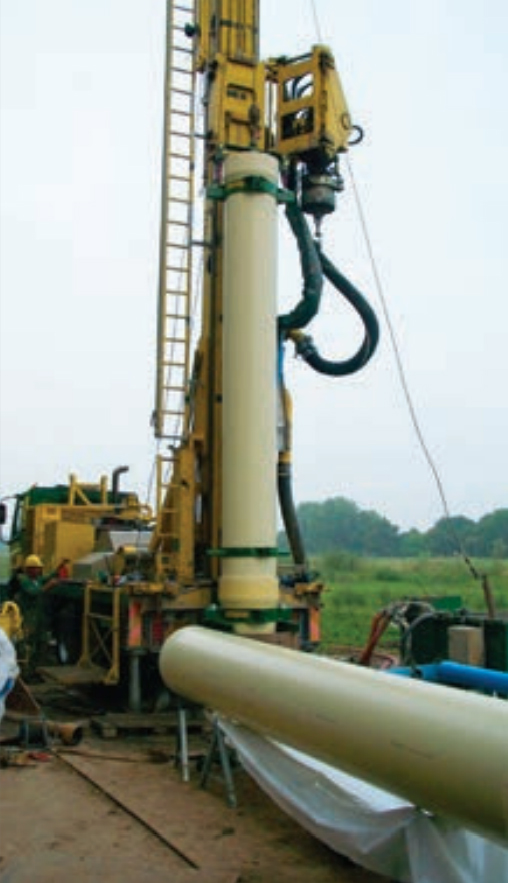The future of drinking water
A pilot study is testing a new system for producing fresh drinking water from brackish groundwater
Predicted future growth in population numbers and rising sea levels mean demand for drinking water will continue to increase just as the natural availability of freshwater decreases. It is likely that brackish groundwater will be an important source of drinking water in the future, but the current methods used to produce fresh water from this source are expensive in terms of their energy use and environmental impact. A new process for producing drinking water from brackish groundwater is about to be trialled in the Netherlands. The results, which will be available following the two-year pilot, will determine whether a cheaper and more energy-efficient alternative to conventional reverse-osmosis (RO) installations will soon be commercially available.
 New system
New system
The Puro concept has been developed by the Delft University of Technology, Oasen, Logisticon, Waternet and Haitjema. The system comprises a specially drilled 200m-deep well, with two filter sections and an RO installation inside the well between the two filter sections. The RO unit treats the water in the well at a depth of approximately 110m below surface. The advantages of this concept are that not all of the extracted groundwater needs to be pumped to the surface, the high hydrostatic pressure is utilised to force the groundwater through the membranes, and the brine is discharged deeper underground at a level where the natural salt concentrate is equal to the discharged concentrate. It is expected that the Puro system will achieve an energy-use reduction of 40% over conventional RO installations at surface level, and no anti-scalants are needed to keep the membranes clean. Within the pilot scheme there is an additional advantage in using brackish groundwater for drinking-water production as it is below an existing well field that is vulnerable to salinisation. Known as the ‘Freshkeeper’ principle, an innovation of the Dutch KWR Watercycle Research Institute, the system will minimise the seepage of brackish water into other wells.
Screens and casing
An important element of the system is the drill specification of the well and the quality of the screens and casing. The geology at the pilot location consists of a semi-impervious top layer of clay and peat to a depth of roughly 15m below surface level. Underneath this is a sandy aquifer to a depth of 26m. A major semi-impervious clay layer is found between 26m and 40m. At greater depths, down to about 200m, fine sands and poorly developed impermeable clay layers alternate. The boundary between fresh and brackish water is found at about 60m. A 900mm-diameter borehole was drilled by Haitjema to a depth of ±125m using the airlifting/reverse-circulation drilling method. The diameter was reduced to 500mm for the final depth of 200m.
The installation of the PVC screen and casing was supported by Boode Waterwell Systems. Boode developed a customised solution for the well screens and casing as a large diameter with highpressure resistance was needed for the system. A 630mm-diameter PVC screen and casing with a 0.5mm slot size was designed for installation to 60-75m, where the brackish water will be extracted. At 175-200m a 200mm-diameter PVC screen was installed, where the concentrate will be injected in the aquifer. The glue connections on each length were specially designed as pressfit to enable the driller to work faster. The cylindrical precision of Boode’s PVC screens and casings, achieved due to the slowest possible rate of extrusion, simplifies the drilling and installation process and avoids potential costly delays due to material stripping through poor connections associated with inferior tolerances in some PVC material.
![]()
Click here and download this article as a PDF.